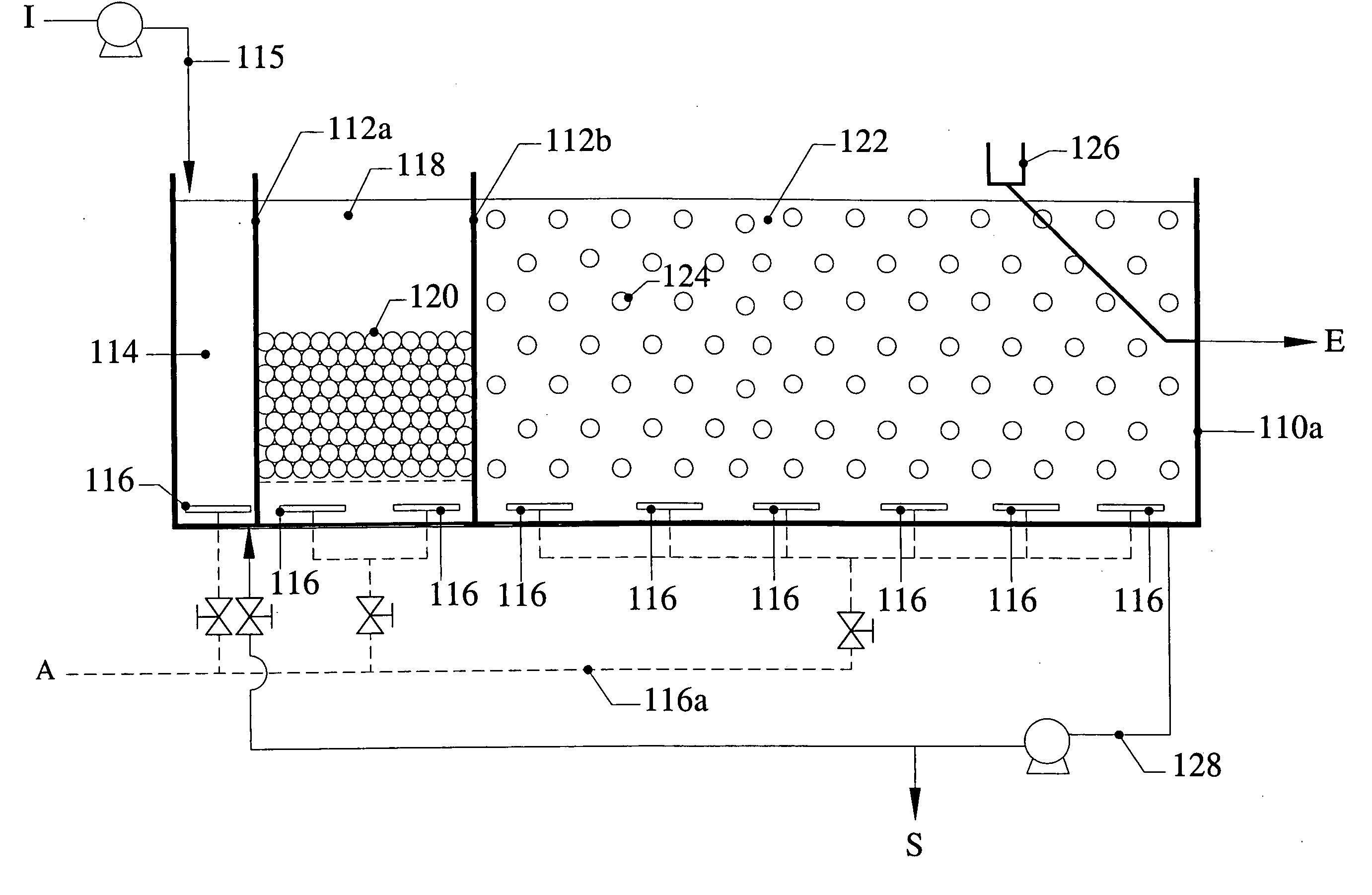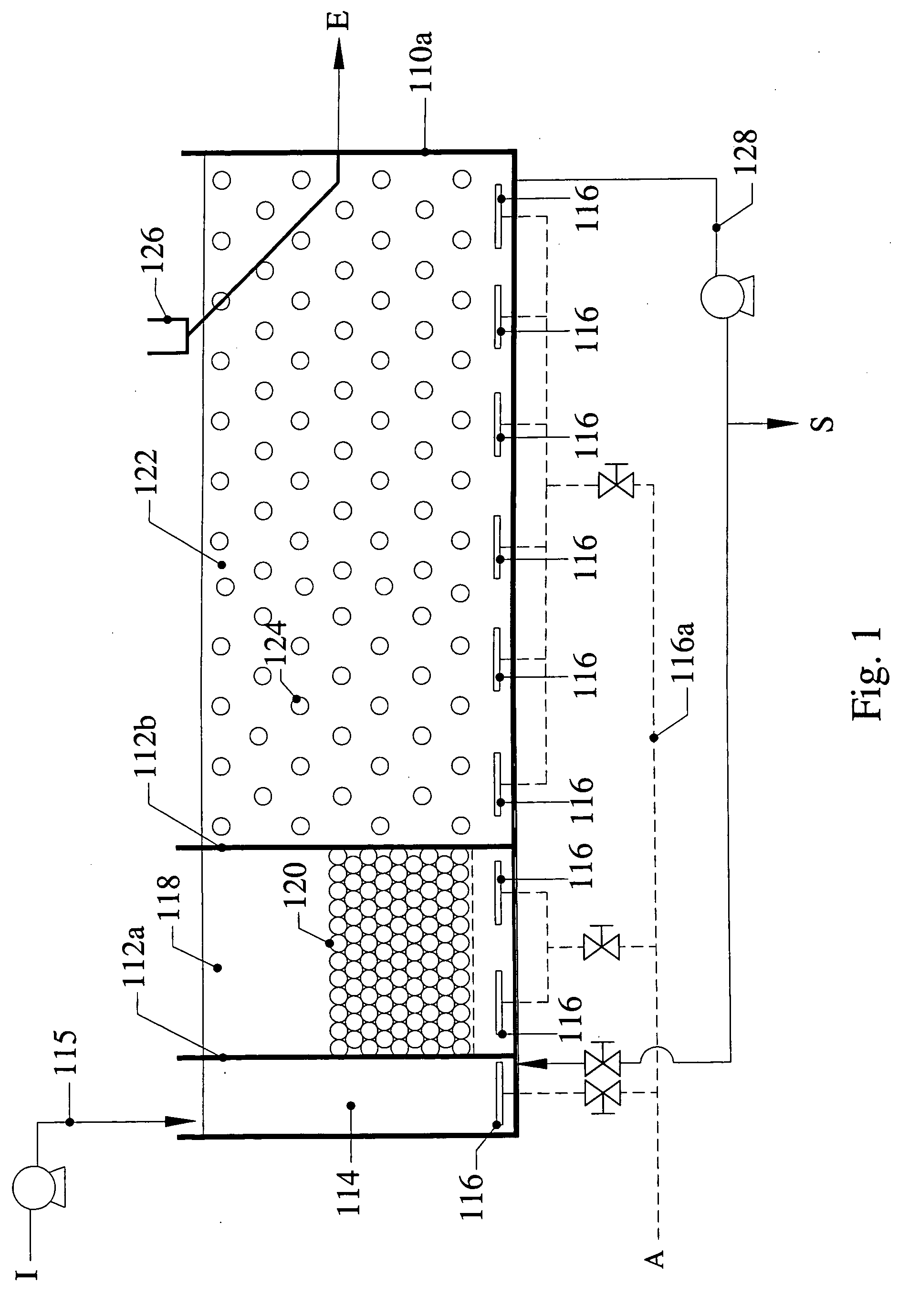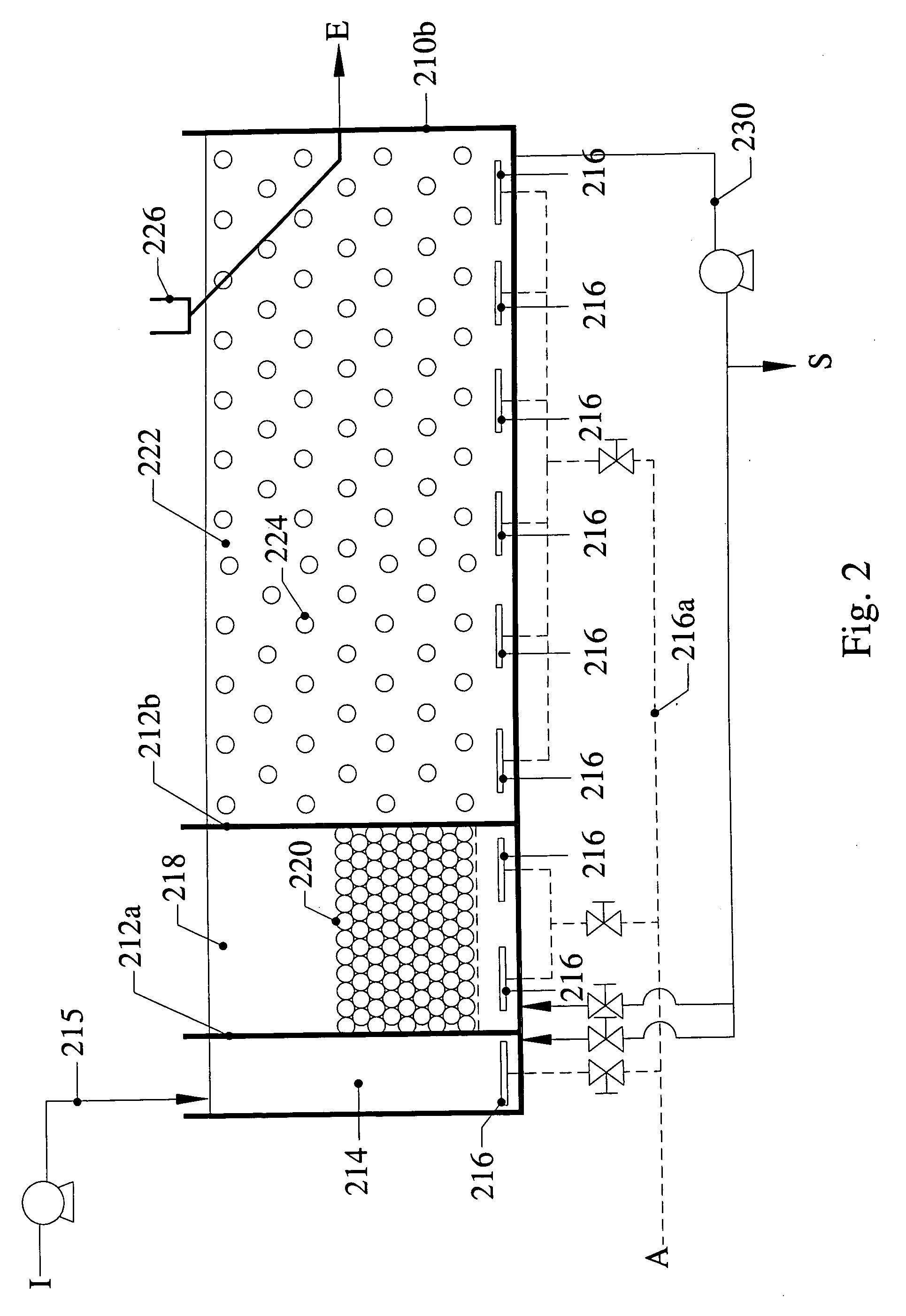Combined activated sludge-biofilm sequencing batch reactor and process
a technology of activated sludge and batch reactor, which is applied in the direction of filtration separation, multi-stage water/sewage treatment, separation process, etc., can solve the problems of large volume bioreactor tank, rate-limiting step that requires long operating sludge ages, and only able to meet non-stringent discharge standards, etc., to achieve similar oxygen transfer efficiency, promote removal, increase
- Summary
- Abstract
- Description
- Claims
- Application Information
AI Technical Summary
Benefits of technology
Problems solved by technology
Method used
Image
Examples
case 1 two
[0122] Case 1 Two-Stage and Two-Sludge Aerobic-Aerobic Process for Organics & Suspended Solids Removal Only
[0123] One of the possible two-stage two-sludge SBR3 system configuration is illustrated in FIG. 1. The cycle sequence of the SBR3 process of case 1 is illustrated in FIGS. 7A and 7B. The cycle starts from step 7A1, going through steps 7A2, 7B1, and 7B2, and goes back to step 7A1. In this process, the three tanks are used for:
[0124] (1) the first stage RC (performed in the second tank 118); and
[0125] (2) the second stage SC (performed in the third tank 122).
[0126] For the ease description of the bio-chemical processes, the following description contains reference only to the biochemical stage without further reference to the particular tanks as shown in FIG. 1, 7A or 7B. It is understood that these processes are performed in the respective tanks.
[0127] In this case, the bioselector of RC Stage is shown as part of the RC Stage. This configuration consists of an RC Stage with RC ...
case 2 two
[0133] Case 2 Two-Stage and Two-Sludge Anoxic / Aerobic-Anoxic / Aerobic Process for Organics-Suspended Solids-Nitrogen Removal Only
[0134] One of the possible two-stage two-sludge SBR3 system configurations is illustrated in FIG. 2. Note that an optional Bioselector (BS) is shown as part of the DN Stage. The cycle sequence of the SBR3 process of case 2 is illustrated in FIGS. 8A and 8B. The cycle starts from step 8A1, going through steps 8A2, 8B1, and 8B2, and goes back to step 8A1. In this process, the three tanks are used for:
[0135] (1) The first stage DN (performed in the second tank 218);
[0136] (2) The second stage N (performed in the third tank 222).
[0137] For the ease description of the biochemical processes, the following description contains reference only to the biochemical stage without further reference to the particular tanks as shown in FIG. 2, 8A and 8B. It is understood that these processes are performed in the respective tanks.
[0138] This configuration consists of a DN S...
case 2 experimental
[0144] Case 2 Experimental Data
[0145] Two fully automatic PLC controlled SBR pilot-scale reactors were built including an on-line wastewater sampling, monitoring and control system. The SBR3 included biofilm carriers with configuration as shown in FIG. 3 and the "conventional SBR" was identical to the SBR3 except that it had no biofilm carriers and was used as a control.
[0146] A Two-Stage Two-Sludge SBR3 was tested: one stage each for nitrification (N Stage) and denitrification (DN Stage), with DN Sludge on the mobile carriers that remain settled at the bottom of the tank when no external mixing is provided in the DN Stage (main role: denitrification) and the N Sludge consisting of the biofilm on the suspended carriers in N Stage (main role: nitrification). Activated sludge was also present, but not associated with any particular stage.
[0147] Configuration and Operation for Initial Phase of Testing
[0148] The initial configuration and operation of the SBR3 for nitrogen removal is sho...
PUM
| Property | Measurement | Unit |
|---|---|---|
| Fraction | aaaaa | aaaaa |
| Fraction | aaaaa | aaaaa |
| Fraction | aaaaa | aaaaa |
Abstract
Description
Claims
Application Information
 Login to View More
Login to View More - R&D
- Intellectual Property
- Life Sciences
- Materials
- Tech Scout
- Unparalleled Data Quality
- Higher Quality Content
- 60% Fewer Hallucinations
Browse by: Latest US Patents, China's latest patents, Technical Efficacy Thesaurus, Application Domain, Technology Topic, Popular Technical Reports.
© 2025 PatSnap. All rights reserved.Legal|Privacy policy|Modern Slavery Act Transparency Statement|Sitemap|About US| Contact US: help@patsnap.com



